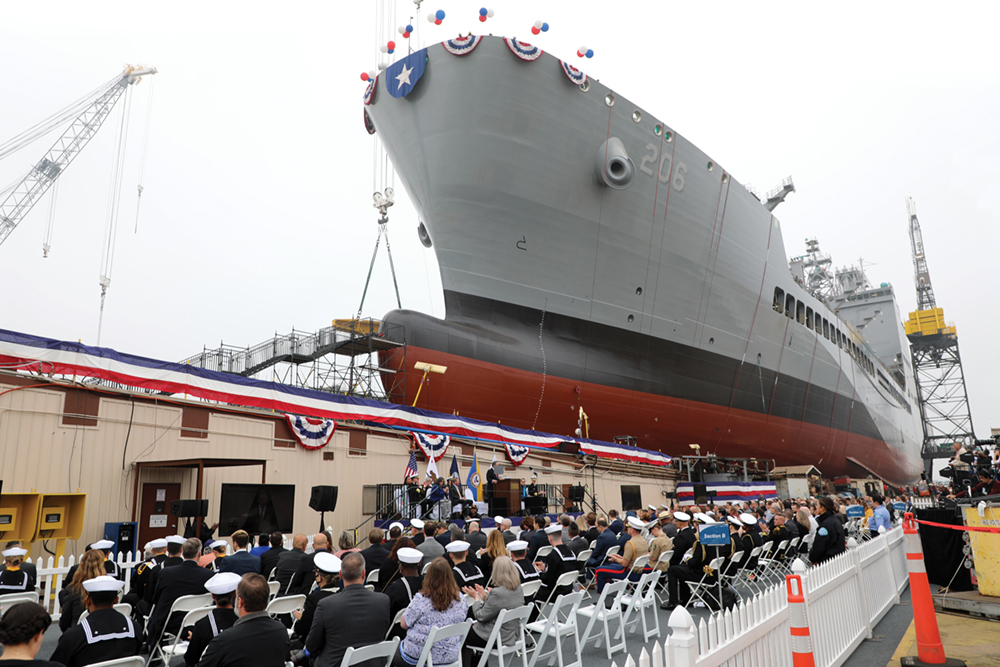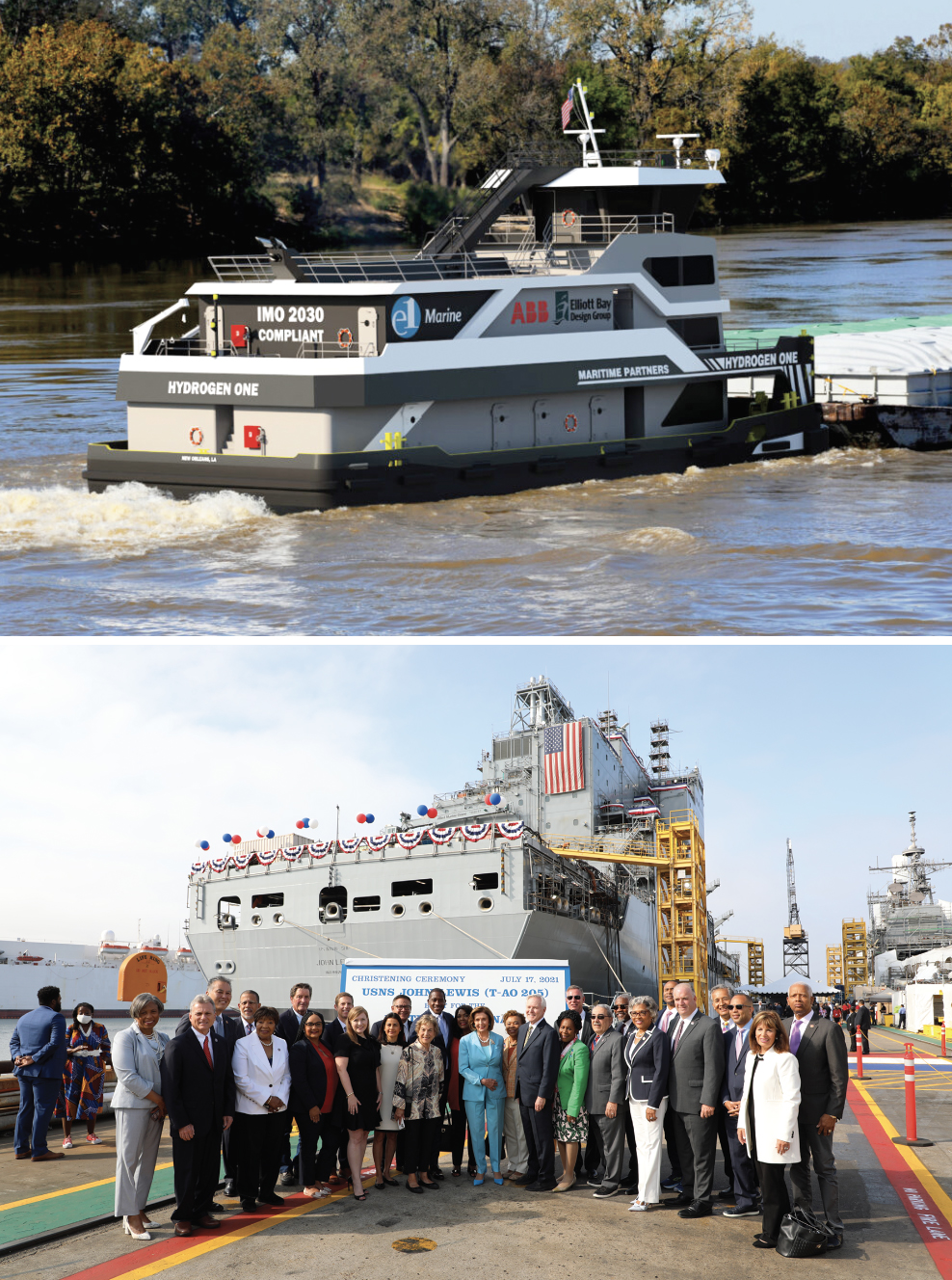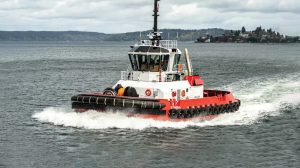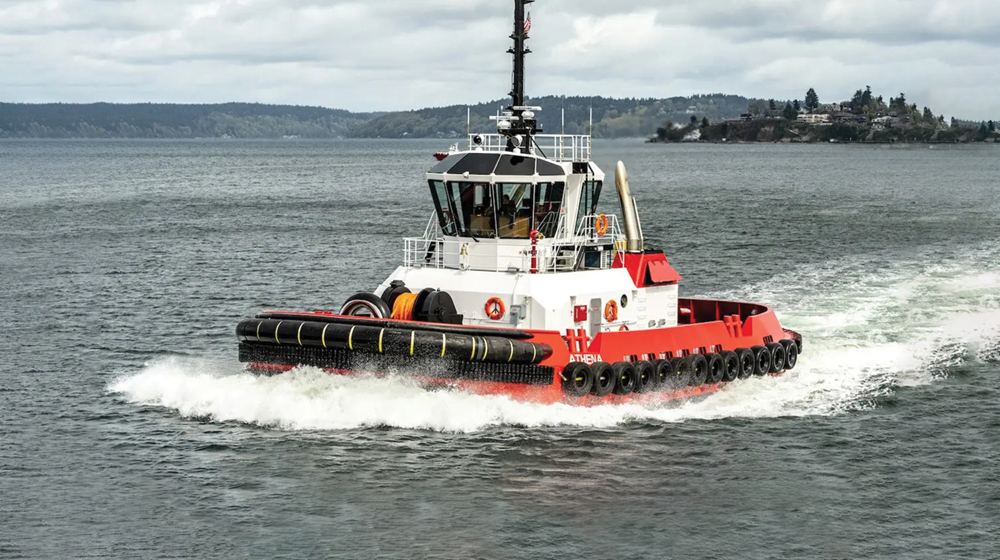
While the U.S. shipbuilding industry has diminished over the past few decades, some are still welding, riveting and brainstorming to fill the oceans and waterways with pleasure boats and enormous freighters that can drift by in relative silence.
But before the actual hands-on labor can begin, concepts and designs are created on paper and computer screens. Shipwrights and designers alike are no longer mainly focused on churning out what’s “tried and true.” As the 21st century presses on, maritime vessel designers are becoming more attuned to specific needs and global technology, all while trying to minimize their impact on our increasingly fragile environment.
Elliott Bay Design Group (EBDG), a Seattle-based naval architecture and marine engineering firm, said that it strives to be on the forefront of that technology.
The company’s VP of Strategic Expansion, Michael Complita, said that alternative fuel sources are key components in the company’s future designs.
“We’re excited about alternative fuel vessels and positioning ourselves to be industry experts on helping the climate,” he said.
EBDG President Robert Ekse explained that the company designs vessels nationally and can work with builders to create ships of all shapes and sizes ranging from fishing boats and passenger excursion vessels to behemoth 760-foot-long international oil tankers.
“All vessels are built with the owners’ designs in mind,” Complita said. “We work with the clients to design and package and develop instructions for the builders. We work with over a dozen clients per year.”
That service often involves visiting the building site to get a hands-on look at how the work is progressing.
“We offer that service to assure the vessel is being built to design and act as a liaison to help the builders do their work,” Complita said. “We’ll often work with a builder with construction coast to coast.”
When taking a peek into the future, the designers say clients are interested in looking at new options for vessels such as hybrid electric ferry boat designs.

Two EBDG-designed ferries were delivered to Staten Island, NY. The passenger ferry, Michael H. Ollis, was named 2021 Boat of the Year at the International WorkBoat Show.
“The hybrids are really versatile,” Complita said. “Clients are interested in flexibility.”
Complita referenced the Hydrogen One, a methanol-fueled towboat it commissioned for Maritime Partners in Louisiana. This work boat will feature an innovative propulsion system to operate around inland waters near Houston and New Orleans (the Hydrogen One was profiled in the May issue of Pacific Maritime).
“If you look at our commercial site, you’ll see we design (vessels) for customers that are not so traditional,” he said.
The non-traditional and not-so-public clients can request swimming pools and other luxury accommodations. Some projects are shrouded in secrecy.
“Commercial (clients) can be private because they don’t want competitors to know what they’re bringing to the market,” Ekse explained.
Unusual requests, of course, can pose quite a challenge.
Complita said they once produced the tech design for a private floating “island,” complete with sandy beaches.
“We also designed a Chicago floating entertainment venue with seven swimming pools and a spa,” he added.
“Another design was to create a low-wake vessel so they could go through smaller harbors,” he said.
Large vessels can have such a significant impact that if they cruise through small harbors, their wakes can damage property like floating docks and boats.
He cited another example: “We recently finished a project six months ago that served as a floating data server that uses sea water to cool the equipment.”
This “data-barge” concept, created in tandem with Nautilus Data Technologies, Lind Marine, Veolia and the Port of Stockton, could be a vastly significant milestone in the problem of keeping heat-generating machines cool enough to operate efficiently.
Years in the making, the data barge utilizes a sustainable source that is readily available and more cost-effective than their land-based counterparts.
Crowley Maritime, which has been operating tugboats in San Francisco Bay since the early 1900s, also has an eye toward using cleaner, environmentally friendly vessels.

In 2021, the Apollo joined its fleet of tugboats servicing the West Coast. Built by Diversified Marine, Inc. in Portland, Ore., the boat’s compact size allows it to serve the busy and often congested ports in the Bay Area. Apollo is a powerful tug for its size, with about 94 tons of bollard pull. The tug uses biofuel resulting in a low carbon footprint.
In April, Crowley added the Athena to its fleet of Tier IV Tugs. Also built by Diversified Marine, Athena’s two 3,386-horsepower Caterpillar Marine 3516 engines produce low greenhouse gas emissions while supplying 96 tons of bollard pull. The vessel services the Puget Sound area.
NASSCO Forges On
General Dynamics NASSCO, the largest shipyard on the U.S. West Coast, was busy in 2021. Despite the sluggish recovery from the worldwide pandemic, the San Diego-based builder celebrated several milestones.
Among them was the christening last July 17 of the USNS John Lewis, the first of a new class of fleet oiler for the U.S. Navy’s Military Sealift Command. Its launch had a special significance—it was the one-year anniversary of the passing of the ship’s namesake. Lewis was a Congressman and American civil rights leader.
Also from NASSCO, the second ship in the John Lewis-class fleet oiler program, the USNS Harvey Milk, was launched and christened in November 2021.
According to NASSCO, its contract with the Navy calls for the design and construction of six 742-foot-long oilers with a full load displacement of 49,850 tons. Designed to transfer fuel to ships in Navy carrier strike groups operating at sea, the oilers have the capacity to carry 157,000 barrels of oil and significant amounts of dry cargo, along with aviation capability, and at speeds of up to 20 knots. The John Lewis-class is replacing the Navy’s current T-AO 187-class fleet replenishment oilers.

